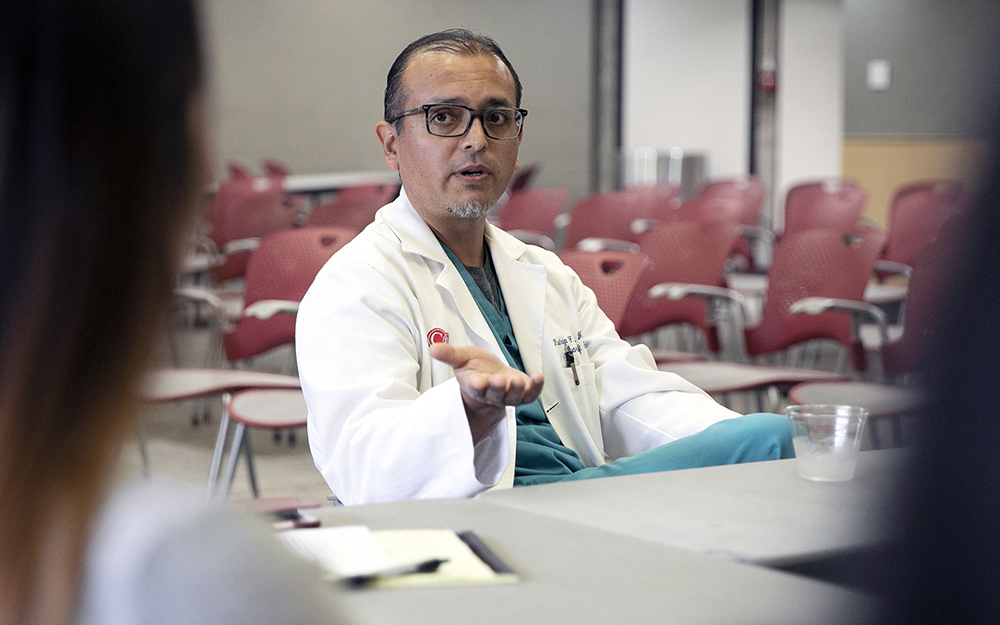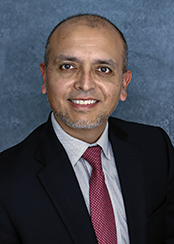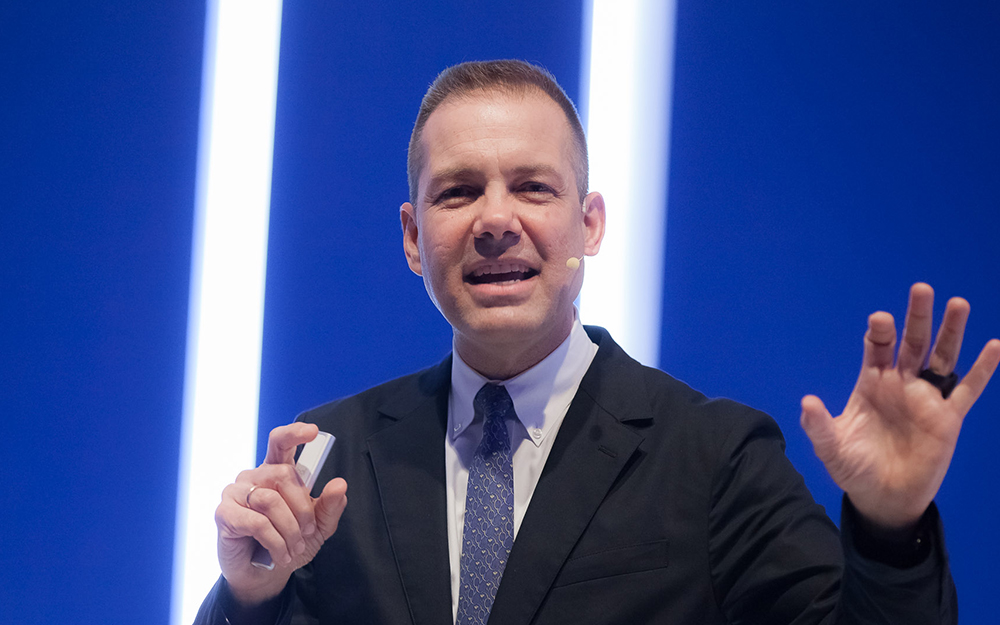Encouraging Latinx Representation in Healthcare
Date
October 7, 2022

Date
October 7, 2022
Credits
Medical providers featured in this article

In Brief
{{cta-block}}
When Dr. Rodrigo Alban began his surgical residency at Cedars-Sinai 20 years ago, he knew of just one other Latinx trainee at the hospital and had little idea what to expect. A recent immigrant from Ecuador, he felt like the odds were stacked against him.
Today, just 6% of California’s doctors are Latinx, according to the California Health Care Foundation.
“I went through a lot in order to get where I am,” says Dr. Alban, now a Cedars-Sinai trauma surgeon and associate director of the General Surgery Residency Program.
The short supply of Latinx doctors is often isolating for both providers and patients—especially in Los Angeles, where nearly half the community is Latinx.
To help turn the tide, Cedars-Sinai’s Office of Diversity and Inclusion formed a Hispanic/Latinx doctors’ group in 2021. Those involved aim to strengthen their outreach into Latinx communities and close those long-standing gaps, as well as offer peer support.
{{providers}}
“We provide help and support for those that are in need—and a lot of our patients and people in need are of Hispanic heritage.”
Mentorship is another priority for the group, with a focus on educating interested minority students, recruiting more Latinx doctors and fostering their professional development once they enter the field.
Made up of more than 30 Cedars-Sinai staff and trainees, the group touches almost all academic departments, including Biomedical Sciences, Medicine, Surgery, Pediatrics and Neurology, according to Denise Gallagher, a program manager in the Office of Diversity and Inclusion.
“What does it mean to be a healthcare provider?” asks Dr. Alban, an early member of the group. “We provide help and support for those who are in need—and a lot of our patients and people in need are of Hispanic heritage.”
Below, Dr. Alban opens up about building a sense of belonging and inspiring the next generation of Latinx doctors.
What is the value of bringing Latinx doctors together to share ideas among those with similar backgrounds?
Dr. Rodrigo Alban: A lot of it is cultural similarities. Our communities tend to be more on the shy side, with a “keep your head down and work hard” mentality. Sometimes the struggles are not really spoken to unless you see somebody who looks like you, behaves like you, speaks the same language as you or understands what “la abuela” or “el abuelo” (grandma or grandpa) used to do.
I’ve had discussions about, unfortunately, some people experiencing racist or inflammatory comments. We try to understand where they’re coming from and how we can best support trainees, especially those of us who are in mid-level or advanced careers. Those who are younger or just starting out often want to know our path to success.
Diversity in medicine is slowly growing, with Hispanic first-year medical students increasing by 7.1% to 2,869 students in the 2021-22 school year, according to the Association of American Medical Colleges. But it’s not keeping pace with overall increases. In fact, reversing the deficit of Hispanic doctors could take more than 90 years.
What’s your strategy for recruiting more Latinx medical students?
RA: In collaboration with the Department of Graduate Medical Education at Cedars-Sinai, we established goals to increase interviews and residency matches for applicants of underrepresented minorities. We are purposefully inviting medical students from underrepresented groups and conducting more holistic reviews of their applications—not just focusing on scores or what medical schools they attended.
These students sometimes might not have the means to make it to top-tier undergraduate programs. They might have to work multiple jobs while in school or attend a community college first.
I think this whole-person view—understanding the applicants more, that they have struggled and they just need this opportunity in reputable medical residency programs like ours at Cedars-Sinai—is going to be really helpful.
We need to pass the baton. It’s a really big problem for subspecialties, including orthopaedic surgery, neurosurgery, ophthalmology and general surgery.
There are also few Latinx healthcare mentors. How are you guiding the next generation?
RA: Strong connections are key. We recently held a panel for Latinx doctors, residents and medical students interested in applying to Cedars-Sinai. We discussed what it’s like here for Latinos and how we can improve representation in medicine.
I heard later from research assistants (who were pre-med in college) that they were inspired seeing people who have gone through difficulties yet achieved success. Even if it’s just reaching a few people, that was enough for me to say it was worth it.
We are also speaking at career days for middle schools and high schools and at church-related activities in the community.
To help solidify these networks and encourage students from underrepresented groups, the Cedars-Sinai Department of Graduate Medical Education and Office of Diversity and Inclusion created a diversity, equity and inclusion ambassador program for medical residents. Some of those who are participating are Latinx.
Latinos face a wide range of health disparities, from cardiovascular health to mental health to cancer. How does representation affect patients?
RA: We see it every day in practice. Patients look startled by the complexity of their medical condition and the decisions they are faced with. Sometimes they have to use a tablet so a far-away interpreter can translate—in a less-than-personal way.
I think it makes a huge difference when you see the face of a doctor who can relate to you, tell you what it means to be sick and help you understand your care plan in your own language. It’s just invaluable, especially in a diverse geographic area like Los Angeles.
Outside of our offices, many of us are looking to educate the Latinx community on health and wellness.
There’s an increasing understanding of the need for more diversity in medical research. Is this a focus for the group?
RA: The way disease presents in our communities can vary because of our genetic background. That is very important as we address issues related to cancer, diabetes, obesity and heart disease, which might behave differently in the Hispanic/Latinx community compared to other populations.
And Hispanics make up less than 8% of clinical trial participants. Developing research specific to our own background is critical, as well as encouraging our younger scientists to be more inclusive.
What does it mean to you to engage in this work empowering the Latinx community?
RA: As somebody who immigrated and had no family in this country, it’s really, really touching to take care of patients who are in similar shoes. I can understand better and be more empathetic when they tell me what they’re going through.
Being in a position where I train residents is a way for me to give back what I have been lucky enough to receive.





